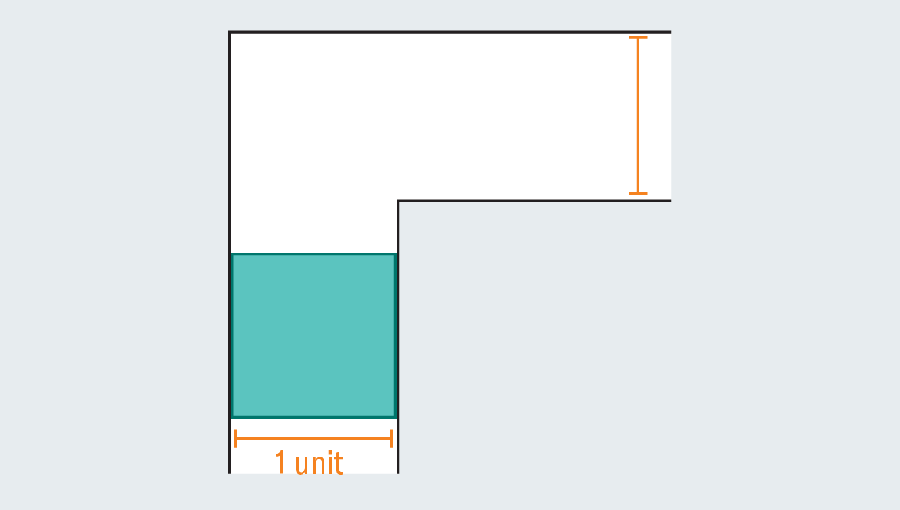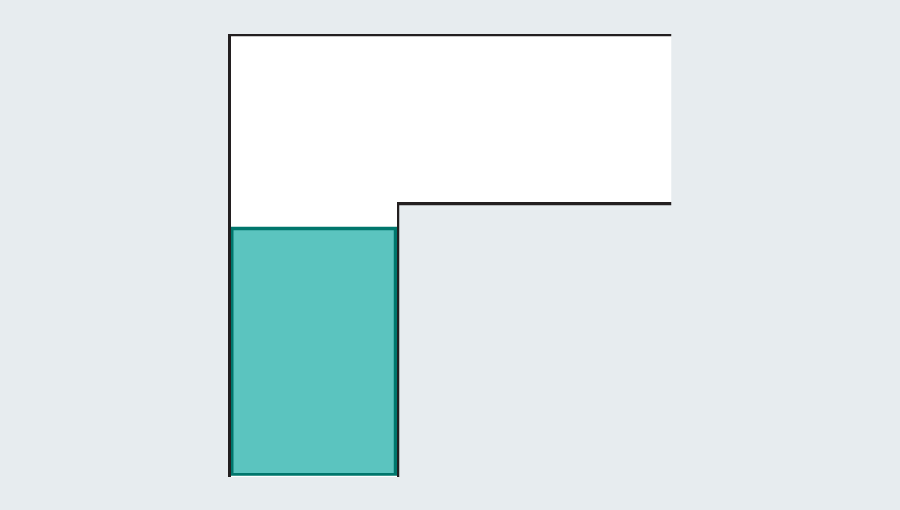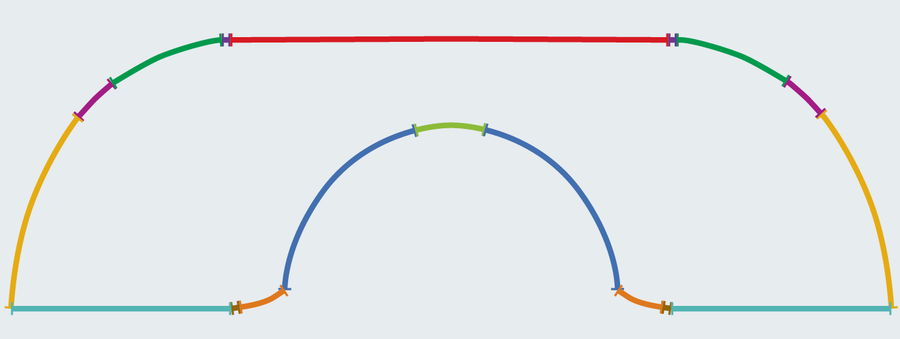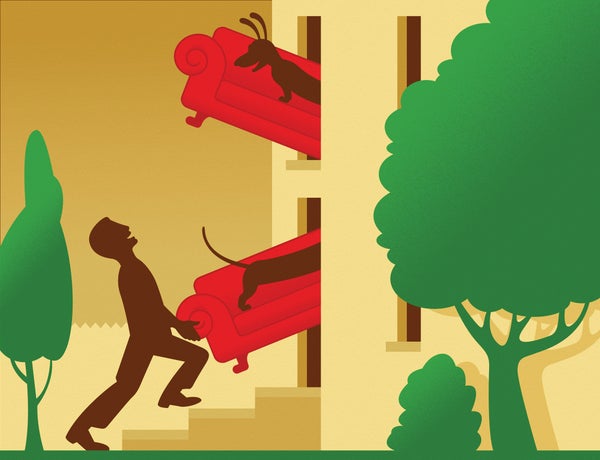For those who have wrestled a bulky couch around a tight corner and lamented, “Will this ever get through?” mathematicians have heard your pleas. Geometry’s “moving sofa problem” asks for the largest shape that can turn a right angle in a narrow corridor without getting stuck. The problem sat unsolved for nearly 60 years until November 2024, when Jineon Baek, a postdoctoral researcher at Yonsei University in Seoul, posted a paper online claiming to resolve it. Baek’s proof has yet to undergo thorough peer review, but initial comments from mathematicians who know Baek and the moving sofa problem seem optimistic. Only time will tell why it took Baek 119 pages to write what Ross Geller of the sitcom Friendssaid in one word: “Pivot!”
The solution is unlikely to help you on moving day, but as frontier math grows more abstruse, mathematicians hold a special fondness for unsolved problems that anybody can understand. In fact, the popular math forum MathOverflow maintains a list of “not especially famous, long-open problems which anyone can understand,” and the moving sofa problem currently ranks second on the list. Still, every proof expands our understanding, and the techniques used to resolve the moving sofa problem will probably lend themselves to other geometric puzzles down the road.
The rules of the problem, which Canadian mathematician Leo Moser first formally posed in 1966, involve maneuvering a rigid shape—meaning that the sofa’s ends don’t yield when pressed—to turn at a right angle in a hallway. The “sofa” can be any geometric shape; it doesn’t have to resemble a real couch. Both the shape and the hallway are two-dimensional. Imagine the sofa weighs too much to lift, and you can only slide it.
On supporting science journalism
If you're enjoying this article, consider supporting our award-winning journalism by subscribing. By purchasing a subscription you are helping to ensure the future of impactful stories about the discoveries and ideas shaping our world today.
A quick tour through the problem’s history reveals the extensive effort that mathematicians have poured into it—they were no couch potatoes. Faced with an empty hallway, what is the largest shape you could squeeze through it? If each leg of the corridor measures one unit across (the specific unit doesn’t matter), then we can easily scoot a one-by-one square through the passage. Elongating the square to form a rectangle leads to instant failure because when the object hits the kink in the hallway, it has no room to turn.


Amanda Montañez
Yet mathematicians realized they could go bigger by introducing curved shapes. Consider a semicircle with a diameter (along its straight base) of two units. When it hits the turn, much of it overhangs in the first leg of the hallway, but the rounded edge leaves just enough room to clear the corner.

Amanda Montañez
Remember the goal is to find the largest “couch” that can slide around the corner. If we dust off our high school geometry formulas, we can calculate the area of the semicircle as π/2, or approximately 1.571. The semicircle is a significant improvement over the square, which had an area of only one unit. Unfortunately, both would look strange in a living room.
Solving the moving sofa problem requires that you optimize not only the size of a shape but also the path that shape traverses. The setup permits two types of motion: sliding and rotating. The square couch only slid, whereas the semicircle slid, rotated around the bend and then slid again on the other side. But objects can slide and rotate at the same time. Mathematician Dan Romik of the University of California, Davis, has noted that a solution to the problem should optimize both types of motion simultaneously.
British mathematician John Hammersley discovered in 1968 that stretching the semicircle can give you a larger sofa if you carve out a chunk to deal with that pesky corner. Furthermore, Hammersley’s sofa takes advantage of a hybrid sliding-plus-rotating motion. The resulting sofa looks like the handset of a landline phone.

Amanda Montañez; Source: “On Moving a Sofa Around a Corner,” by Joseph L. Gerver, in Geometriae Dedicata, Vol. 42, No. 3; June 1992 (reference)
Optimizing the different variables yields a sofa with area of π/2 + 2/π, or approximately 2.2074. This is a huge upgrade from the semicircle, akin to moving from a love seat to a sectional. But progress stalled there for 24 years. The next significant improvement would be the last. In 1992 Joseph L. Gerver of Rutgers University unveiled a masterwork of mathematical carpentry, which we now know to be the largest possible sofa.
At first Gerver’s sofa might look identical to Hammersley’s, but it’s a much more complicated construction. Gerver stitched together 18 distinct curves to form his shape. On closer inspection, you might spot some differences, especially the beveled edges at the base of the rounded cutout.

Amanda Montañez; Source: “On Moving a Sofa Around a Corner,” by Joseph L. Gerver, in Geometriae Dedicata, Vol. 42, No. 3; June 1992 (reference)
The area of Gerver’s triumph measures 2.2195 units. Surprisingly, Hammersley’s relatively simple sofa fell only about 0.012 short of the optimal size. Although Gerver’s discovery is just a skosh larger than its predecessor, Gerver suspected that he had identified the maximum possible size. He couldn’t prove it, though. And neither could anybody else for another 32 years.

Amanda Montañez; Source: “On Moving a Sofa Around a Corner,” by Joseph L. Gerver, in Geometriae Dedicata, Vol. 42, No. 3; June 1992 (reference)
In the absence of proof, several researchers turned to intensive computer simulations, which demonstrated new bounds on the largest sofa that could traverse the corner. Baek was at the forefront of these efforts, which made it all the more surprising that his eventual solution did not rely on computers at all.
Baek wrote his Ph.D. thesis on the moving sofa problem, contributing several incremental insights. That same year he sewed all his fresh ideas together into an impressive opus that proves no sofa larger than Gerver’s can squeeze through the hallway. Cracking a long-standing open problem is a dream for any mathematician, let alone one so early in their career. If Baek’s work withstands scrutiny, he will most likely find himself in high demand for professorships. Unless he pivots into furniture making.
